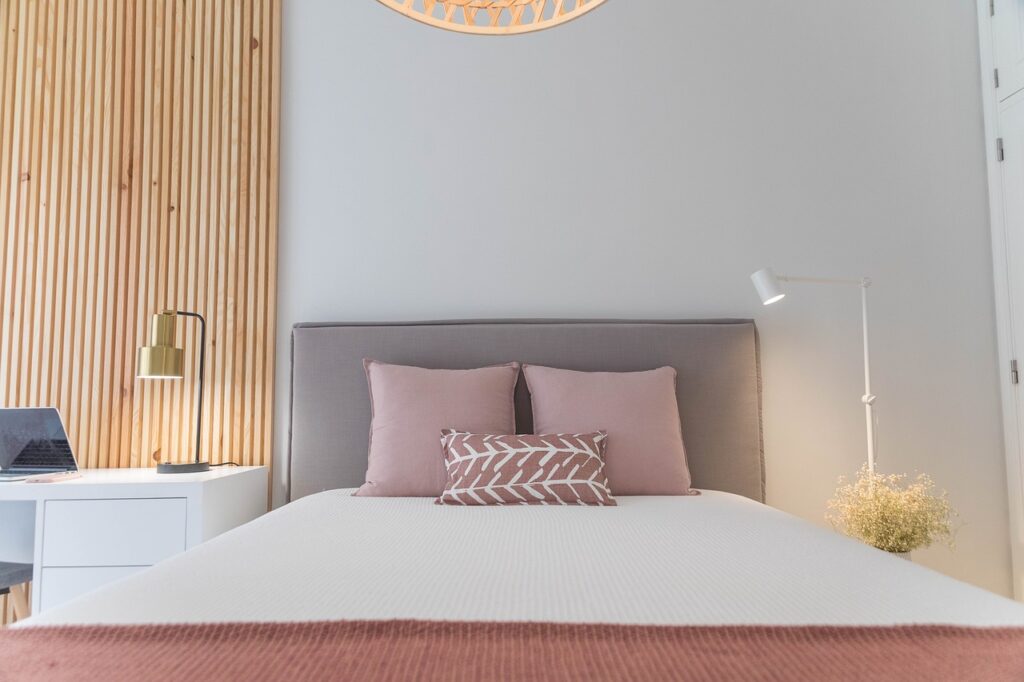- November 18, 2023
- Posted by: DBS
- Category: Business

Are you considering starting an interior design company in Dubai? Look no further, as DBS Business Setup is here to provide you with the necessary support and guidance. As a leading business setup consultancy firm based in Dubai, DBS offers a range of services including business registration, company formation, and support services across the UAE and GCC. From registering your business in mainland or free zones, to obtaining necessary approvals from government authorities, opening corporate bank accounts, and handling VAT and tax filings, our team of experts is equipped to assist you every step of the way. With our extensive knowledge and experience in the industry, we are committed to helping you establish your interior design company in Dubai.

Choosing a Business Structure
When starting an interior design company in Dubai, one of the first steps is to choose a suitable business structure. There are several options to consider, including sole proprietorship, partnership, limited liability company (LLC), and free zone company. Each structure has its advantages and disadvantages, and it is important to assess your specific needs and goals before making a decision.
A sole proprietorship is the simplest and most straightforward structure, where you are the sole owner of the business. This structure offers complete control and flexibility but also means you are personally liable for any debts or legal issues.
For those looking to enter into a business partnership, a partnership structure allows for shared ownership and responsibilities. It is essential to have a well-drafted partnership agreement to outline the roles, responsibilities, and profit-sharing arrangements.
Another popular option is to form an LLC, which provides limited liability protection and separates your personal assets from the business. This structure also allows for multiple owners and is often recommended for medium to large-sized businesses.
Lastly, setting up a Free zone company in Dubai provides various incentives, such as 100% foreign ownership, zero corporate and personal taxes, and simplified company registration processes. However, there may be restrictions on conducting business outside the designated free zone.
It is crucial to consult with a business setup consultant or legal professional to fully understand the legal and financial implications of each structure and choose the one that aligns with your long-term objectives.
Researching the Market
Before diving into the interior design industry in Dubai, conducting thorough market research is essential. This research will help you gain insights into the local industry landscape, target audience preferences, and competitors’ strengths and weaknesses. Here are key subheadings to consider for effective market research:
Identifying Target Audience
Understanding your target audience is crucial for tailoring your design services and marketing efforts. Analyze the demographics and lifestyle of your potential clients, considering factors such as age, income level, and design preferences. Conduct surveys and interviews to gather valuable insights and adapt your business strategies accordingly.
Analyzing Competitors
Take time to study the competition in the interior design market in Dubai. Identify the top players, their areas of expertise, pricing strategies, and unique selling points. Analyzing your competitors will help you differentiate your business and identify any gaps in the market that you can leverage.
Understanding Local Design Trends
Keeping up with local design trends is essential in providing relevant and appealing services to your target audience. Research popular design styles, materials, color palettes, and furniture preferences in Dubai. Stay updated with the latest industry publications, attend design exhibitions, and engage with local interior design communities to stay ahead of the curve.
Determining Pricing Strategies
Pricing your interior design services appropriately is crucial for profitability and competitiveness. Consider factors such as your costs, market demand, target audience’s willingness to pay, and competitor pricing. Striking the right balance between affordability and quality will attract clients while ensuring sustainability for your business.

Obtaining Necessary Licenses and Permits
Setting up an interior design company in Dubai requires obtaining the necessary licenses and permits to legally operate. The process can initially appear complex, but with the right guidance, it can be completed efficiently. Consider the following subheadings to navigate the licensing process successfully:
Understanding the Licensing Process
Familiarize yourself with the general process of obtaining the required licenses in Dubai. This includes understanding the different types of licenses available, the documentation and requirements for each, and the relevant government departments responsible for issuing these licenses.
Identifying the Required Permits
Depending on the nature of your interior design business, specific permits may be necessary. Research and identify the permits you will need to obtain, such as permits for commercial fit-outs, display of signage, and health and safety compliance. Ensure compliance with local regulations and guidelines to avoid any legal complications in the future.
Applying for Trade Licenses
Applying for a trade license is a crucial step in establishing your interior design company. Choose the appropriate license based on your business structure and activities, such as professional, commercial, or industrial licenses. Collect the necessary documentation, complete the application forms, and submit them to the relevant government authorities.
Getting Approvals from Government Authorities
In addition to trade licenses, there may be specific approvals required from government authorities, such as the Dubai Economic Department, Dubai Municipality, and the Dubai Civil Defence. Research the specific approvals needed for your interior design business and ensure compliance with all regulations and guidelines.
It is advisable to work with a business setup consultancy or engage a PRO (Public Relations Officer) service to navigate the licensing process smoothly and efficiently.
Choosing a Location
Selecting the right location for your interior design company in Dubai is crucial for attracting clients, ensuring convenience for suppliers, and positioning yourself within the industry. Consider the following subheadings when evaluating prospective locations:
Evaluating the Target Market’s Location Preferences
Understand the preferences and behaviors of your target market when it comes to location. Consider factors such as proximity to residential areas, commercial hubs, and popular shopping destinations. Conduct market research to gauge the most sought-after areas for interior design services and select a location that aligns with your target audience’s preferences.
Exploring Available Office Spaces
Research the available office spaces in Dubai that match your requirements and budget. Consider factors such as size, layout, facilities, and accessibility. Evaluate the overall ambiance and image that the office space portrays, as this will play a role in attracting clients and employees.
Considering Proximity to Suppliers and Clients
Choose a location that provides convenient access to suppliers, as this will impact your ability to source materials and complete projects efficiently. Additionally, being situated close to your target market will reduce transportation costs and make it easier for clients to visit your office.
Analyzing Rental Costs
Rental costs can significantly impact your operational expenses. Conduct a thorough analysis of rental prices in different areas of Dubai, considering factors such as demand, facilities, and proximity to key amenities. Ensure that your chosen location is financially viable and aligns with your budget projections.
Consulting with a real estate agent who specializes in commercial properties in Dubai can provide valuable insights and help you make an informed decision about the location for your interior design company.

Building a Team
Assembling the right team is crucial for providing high-quality services and managing the operations of your interior design company. Consider the following subheadings when building your team:
Identifying Key Positions
Determine the key positions that your interior design company requires to function effectively. This may include roles such as project managers, interior designers, architects, procurement specialists, and administrative staff. Clearly define the responsibilities and qualifications for each position to ensure a well-rounded team.
Hiring Skilled Designers
Interior designers are the core of your business, responsible for translating clients’ requirements into visually appealing spaces. Seek out talented and experienced designers with a diverse portfolio that showcases their skills in various design styles. Conduct thorough interviews and design assessments to accurately assess their abilities.
Recruiting Sales and Marketing Professionals
Having a dedicated sales and marketing team is vital for attracting clients and promoting your interior design services. Look for professionals with a strong background in sales, marketing, and business development. They should possess excellent communication skills and the ability to understand and articulate design concepts effectively.
Determining Support Staff Requirements
Support staff, such as administrative assistants and procurement specialists, play a crucial role in ensuring the smooth functioning of your interior design company. Assess your operational needs and determine the number and qualifications of support staff required. Prioritize individuals with strong organizational and communication skills to handle administrative tasks and assist with procurement processes.
When recruiting team members, consider conducting thorough interviews, checking references, and evaluating candidates’ portfolios or work samples. Creating a positive and inclusive work culture will help attract and retain top talent.
Developing a Business Plan
Creating a comprehensive business plan will serve as your roadmap and provide a clear direction for your interior design company. Consider the following subheadings when outlining your business plan:
Defining the Company’s Mission and Vision
Clear and concise mission and vision statements will guide your decision-making and communicate your company’s purpose to stakeholders. Define the overall mission of your interior design company and establish a vision for its growth and success.
Setting Measurable Goals and Objectives
Identify specific, measurable, attainable, relevant, and time-bound (SMART) goals and objectives for your interior design company. These goals may include revenue targets, customer acquisition metrics, and expansion plans. Set milestones to track progress and make informed adjustments to your strategies when necessary.
Determining Target Market Segments
Develop a deep understanding of your target market segments and define your ideal client profiles. Consider factors such as demographics, income levels, and design preferences to tailor your services and marketing efforts effectively. Position yourself as the go-to interior design company for specific market segments to establish a strong reputation and attract relevant clientele.
Creating a Marketing and Sales Strategy
Outline a comprehensive marketing and sales strategy to promote your interior design services. Identify the most effective channels to reach your target audience, such as social media platforms, industry publications, and networking events. Develop a consistent brand image and create compelling marketing materials that highlight your unique selling points.
Preparing Financial Projections
Financial projections play a critical role in determining the feasibility and profitability of your interior design company. Prepare detailed projections for your revenue, expenses, and cash flow for the first few years of operation. Consider factors such as industry growth rates, competition, and pricing strategies when formulating your financial projections.
Consulting with financial experts or engaging the services of a business setup consultancy that specializes in financial planning can assist in creating accurate and realistic financial projections.
Creating a Brand Identity
Establishing a strong brand identity is essential in differentiating your interior design company and building brand recognition. Consider the following subheadings when developing your brand identity:
Choosing a Company Name
Selecting an appropriate and memorable company name is crucial for creating a strong brand identity. Ensure that the name is unique, reflects your company’s values and services, and is not already registered by another company in the same industry. Research trademark regulations to avoid any legal issues in the future.
Designing a Compelling Logo
A well-designed logo can instantly communicate your brand’s personality and aesthetics. Invest in professional logo design services or hire an experienced graphic designer to create a logo that is visually appealing, timeless, and aligns with your company’s values. Ensure that your logo is versatile and can be used across various marketing materials and platforms.
Creating a Unique Brand Identity
Develop a unique and consistent brand identity that sets your interior design company apart from the competition. Consider factors such as brand colors, typography, tone of voice, and design elements. Create brand guidelines that outline the proper usage of your brand assets to maintain consistency across all marketing materials and touchpoints.
Developing a Professional Website and Online Presence
In today’s digital landscape, having a professional website and a strong online presence is essential for attracting clients and showcasing your portfolio. Invest in a well-designed and user-friendly website that highlights your previous projects, services offered, and contact information. Utilize search engine optimization (SEO) techniques to improve your website’s visibility in online search results.
Maintain an active presence on relevant social media platforms, such as Instagram and Pinterest, to showcase your work and engage with potential clients. Regularly update your website and social media accounts with fresh content to stay top of mind with your target audience.
Establishing Supplier Relationships
Developing reliable and sustainable relationships with suppliers is crucial for ensuring a smooth workflow and timely completion of projects. Consider the following subheadings when establishing supplier relationships:
Researching Reputable Suppliers
Conduct thorough research to identify reputable suppliers of interior design materials and furnishings. Look for suppliers who offer high-quality products, competitive pricing, and excellent customer service. Consider attending trade shows and exhibitions to meet suppliers in person and assess their product offerings.
Negotiating Favorable Terms and Pricing
Negotiate favorable terms and pricing with your suppliers to ensure cost-effective procurement. Build strong relationships with your suppliers and explore opportunities for discounts, bulk purchasing, or exclusivity agreements. Regularly review your supplier contracts to assess your options and maintain positive relationships.
Ensuring Timely Delivery of Materials
Timely delivery of materials is critical for maintaining project deadlines and client satisfaction. Ensure that your suppliers have a reliable track record for on-time deliveries and communicate your expectations clearly. Consider implementing inventory management systems and tracking processes to prevent delays and streamline your procurement processes.
Maintaining open lines of communication with your suppliers, regularly reviewing your procurement strategies, and seeking feedback from your team will help establish strong and mutually beneficial supplier relationships.
Marketing and Promoting Your Business
Effectively marketing and promoting your interior design business will help increase brand awareness, attract clients, and establish your reputation in the industry. Consider the following subheadings when developing your marketing strategies:
Developing a Marketing Strategy
Create a comprehensive marketing strategy that outlines your goals, target audience, messaging, and marketing channels. Utilize a mix of online and offline marketing tactics, such as content marketing, email marketing, print advertisements, and collaborations with complementary businesses. Monitor the effectiveness of your marketing initiatives and make adjustments as needed.
Utilizing Social Media Platforms
Leverage social media platforms to showcase your portfolio, engage with your target audience, and promote your interior design services. Utilize visually appealing content, such as project images, behind-the-scenes videos, and design tips, to engage your followers and establish yourself as an industry expert. Collaborate with influencers or industry professionals to expand your reach and attract potential clients.
Networking within the Industry
Networking within the interior design industry in Dubai is essential for building connections, staying updated with industry trends, and gaining referrals. Attend industry events, join professional associations, and participate in design competitions or awards to expand your network. Foster strong relationships with other industry professionals, contractors, and suppliers to create a collaborative and supportive ecosystem.
Participating in Trade Shows and Exhibitions
Participating in trade shows and exhibitions provides an opportunity to showcase your interior design services to a wider audience. Research relevant trade shows and exhibitions in Dubai and exhibit your work or collaborate with other industry professionals. Utilize eye-catching booth designs, well-curated portfolios, and engaging presentations to attract potential clients and build brand visibility.
Maintain a consistent and professional brand image across all marketing channels, regularly assess the effectiveness of your marketing efforts, and adapt your strategies to meet the evolving needs and preferences of your target audience.
Continuously Improving and Innovating
To stay ahead in the interior design industry and ensure the long-term success of your company, it is essential to continuously improve and innovate. Consider the following subheadings to foster a culture of growth and innovation within your interior design company:
Staying Updated with Industry Trends
Stay abreast of the latest trends, technologies, and best practices in the interior design industry. Regularly read industry publications, follow renowned designers and influencers, and attend design conferences and workshops. Embrace innovative design trends and incorporate them into your projects to offer unique and cutting-edge solutions to your clients.
Investing in Professional Development
Encourage ongoing professional development among your team members by providing opportunities for training, workshops, and certifications. Stay informed about the latest software and tools in the interior design industry and invest in their implementation to streamline your processes and improve productivity. Encourage a culture of continuous learning and collaboration within your organization.
Seeking Customer Feedback
Regularly seek feedback from your clients to understand their satisfaction levels, identify areas for improvement, and address any concerns promptly. Implement a feedback mechanism, such as customer satisfaction surveys or post-project reviews, to gauge the effectiveness of your services. Utilize the feedback received to refine your design processes and enhance the overall customer experience.
Evaluating and Implementing New Technologies
Embrace new technologies and software solutions that can enhance your interior design processes and provide a competitive edge. Explore augmented reality (AR) and virtual reality (VR) tools to offer immersive client experiences and visualize design concepts more effectively. Adopt project management software to streamline communication and collaboration among team members.
Regularly assess the effectiveness of the technologies and tools you implement, seek feedback from your team members, and make necessary adjustments to ensure maximum efficiency and effectiveness.
By continuously improving and innovating, you will position your interior design company as a leader in the industry, attract clients who appreciate contemporary design solutions, and stay ahead of the competition.
In conclusion, starting an interior design company in Dubai requires careful consideration of various factors and detailed planning. By choosing a suitable business structure, conducting thorough market research, obtaining the necessary licenses, selecting the right location, building a talented team, developing a comprehensive business plan, creating a strong brand identity, establishing reliable supplier relationships, effectively marketing your business, and continuously improving and innovating, you can set the stage for success in the vibrant interior design industry of Dubai.

